
Three Years of Diablo Range Fire BioBlitzes
More Than 13,000 Observations, Nearly 1,500 Species
In August 2020, the Santa Clara Unit (SCU) Lightning Complex wildfires began. Over the next 46 days, a series of approximately 20 fires scorched over 396,000 acres of land across five different counties in the northern Diablo Range.
The SCU Fire Complex is the fourth largest wildfire in California history. Save Mount Diablo saw this event an as opportunity to observe and record the post-fire effects and regeneration in the northern Diablo Range.
We partnered with the California Native Plant Society for their Fire Followers Campaign to document observations using iNaturalist.
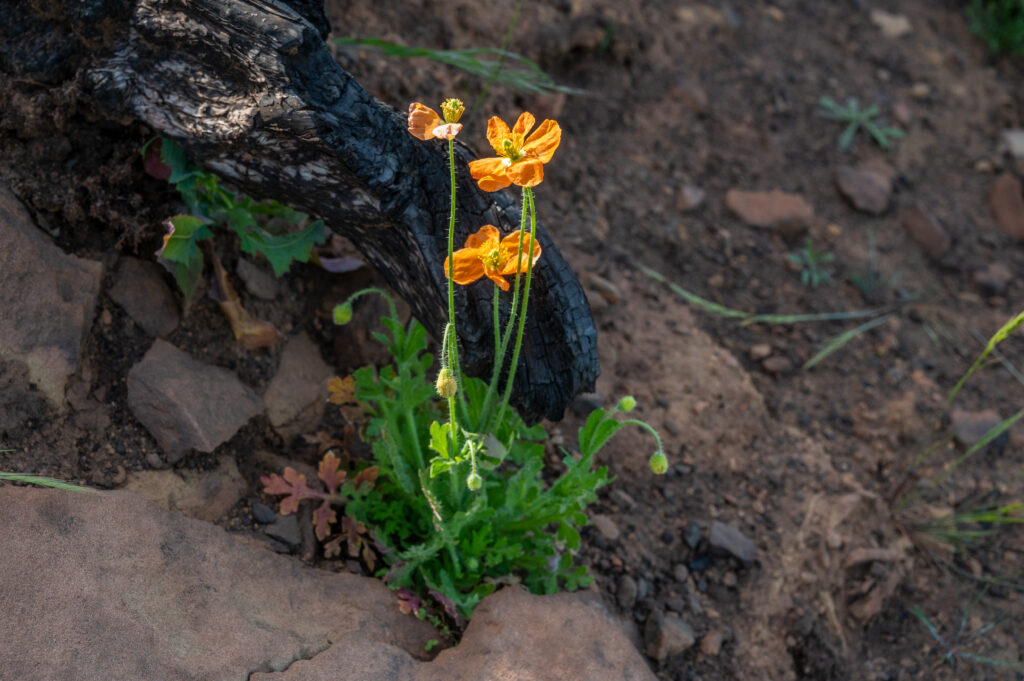
Fire poppy (Papaver californicum) found during the Save Mount Diablo BioBlitz in the SCU Lighting Complex fire footprint. Photo by Scott Hein
In 2021, because of the COVID pandemic and required sheltering, Save Mount Diablo hosted a two-week, dispersed BioBlitz event focused on the SCU Lightning Complex fire footprint.
The goal was to adapt the annual BioBlitz tradition while inspiring community naturalists and outdoor enthusiasts to explore various public, burned sites and document their findings.
This three-year project recorded the first years of regeneration after the powerful wildfires.
In the first spring after the fires, the landscape was nearly barren. Hillsides that had previously been impenetrable with thick stands of chaparral were obliterated, exposing the ashy and burnt soil below.
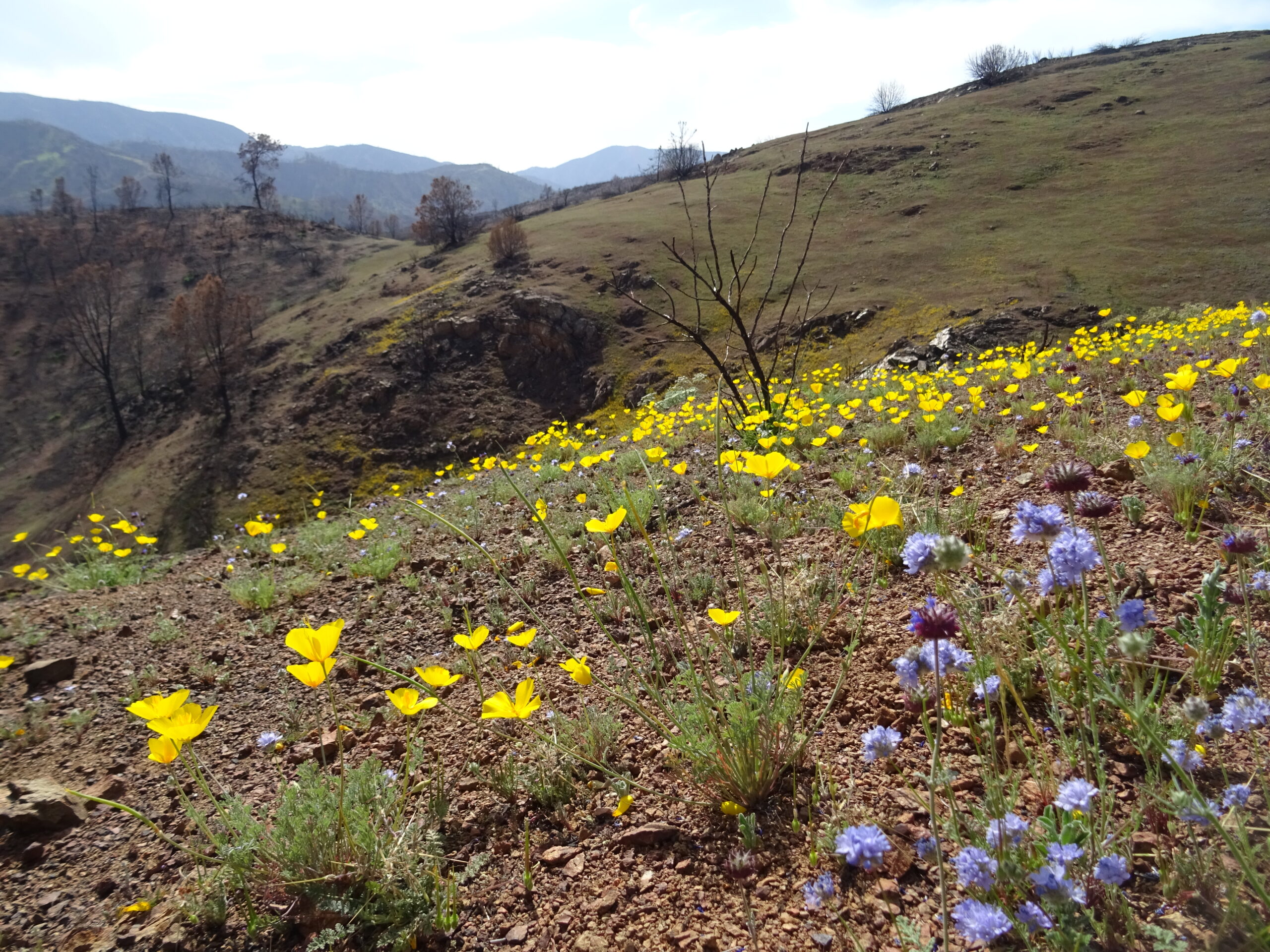
Tufted poppy (Eschscholzia caespitosa) in Del Puerto Canyon. Photo by Sean Burke
The space and light allowed wildflowers to flourish, creating whole stands of vibrant flora across the fire footprint.
In year two, shrubs grew and grasses turned hillsides green once again, but wildflowers still had lots of room.
By year three, flowers were still in abundance, along with a larger presence of invasive weeds, and the shrubs grew bushier, which made it more challenging to traverse the landscape.
Save Mount Diablo’s stewardship team jumped at the opportunity to explore the region post-fire, which led to the first major discovery.
Members of our land team observed fire poppies (Papaver californicum) on steep rocky slopes in the Morgan Territory/Round Valley/Los Vaqueros area, which was the first-ever record of fire poppies at that location. But that was not the last time they were observed.
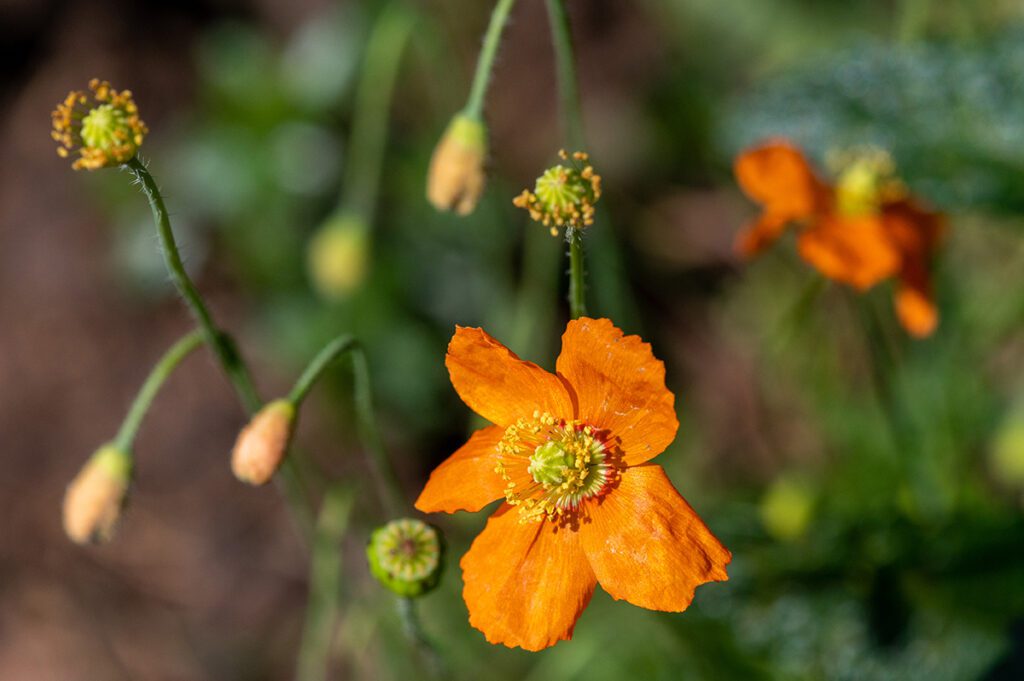
Fire poppy discovered during our BioBlitz. Photo by Scott Hein
They were seen again in the same area in following years, in higher abundance in 2022 and a decreased population in 2023.
Participants drove through Del Puerto Canyon to find large populations of other “fire followers,” or plants that sprout in response to fire, like golden eardrops (Ehrendorferia chrysantha) and whispering bells (Emmenanthe penduliflora) among swaths of other wildflowers.
A few rare plants were observed by stewardship staff during years two and three at Henry W. Coe State Park.
Large-flowered leptosiphon (Leptosiphon grandiflorus), Nutall’s scrub oak (Quercus dumosa), and most beautiful jewelflower (Streptanthus glandulosus ssp. glandulosus) were spotted during hikes throughout the state park and identified with help from the iNaturalist community.
Other contributors observed many other amazing species, including a roadrunner and several mountain lions.
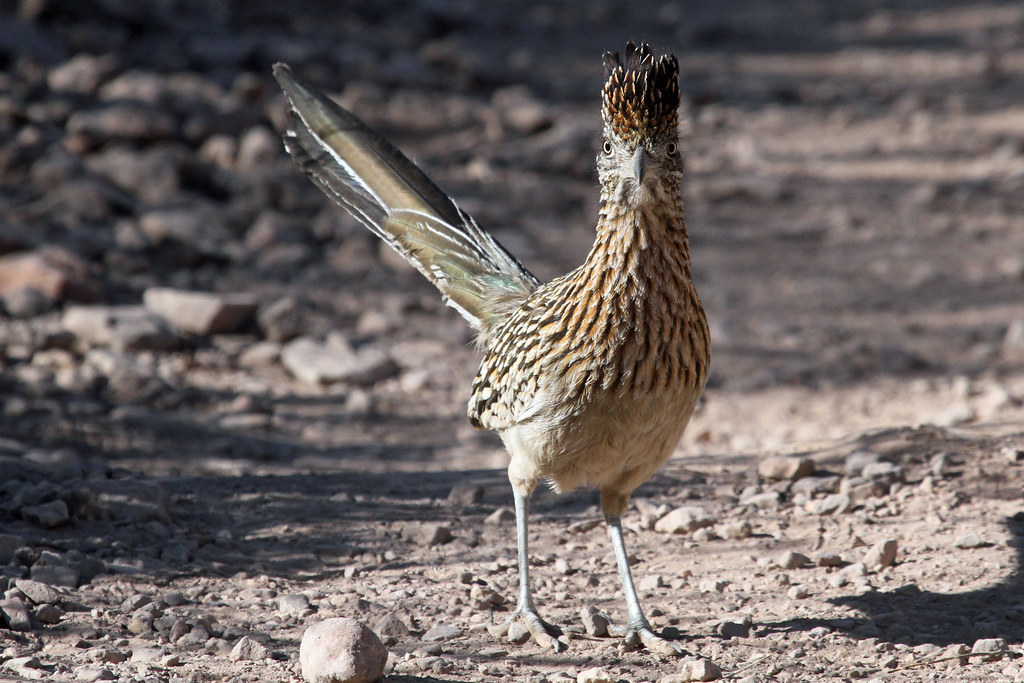
Roadrunner. Photo: Greg Schechter / CC BY
Each year, Save Mount Diablo also hosted a 24-hour BioBlitz at a specific area within the burn zone and invited researchers and scientists to contribute to a collaborative species list.
In 2021, we held a small gathering at the 9,000-acre Connolly Ranch, where nesting golden eagles were observed.
The 24-hour BioBlitz in 2022 was held at Cakebread Ranch, Round Valley Regional Preserve, and Morgan Territory Regional Preserve, and also yielded exciting results.
Attendees spotted California clam shrimp (Cyzicus californicus) and an endangered Crotch’s bumblebee (Bombus crotchii), a species that is in decline across the state.
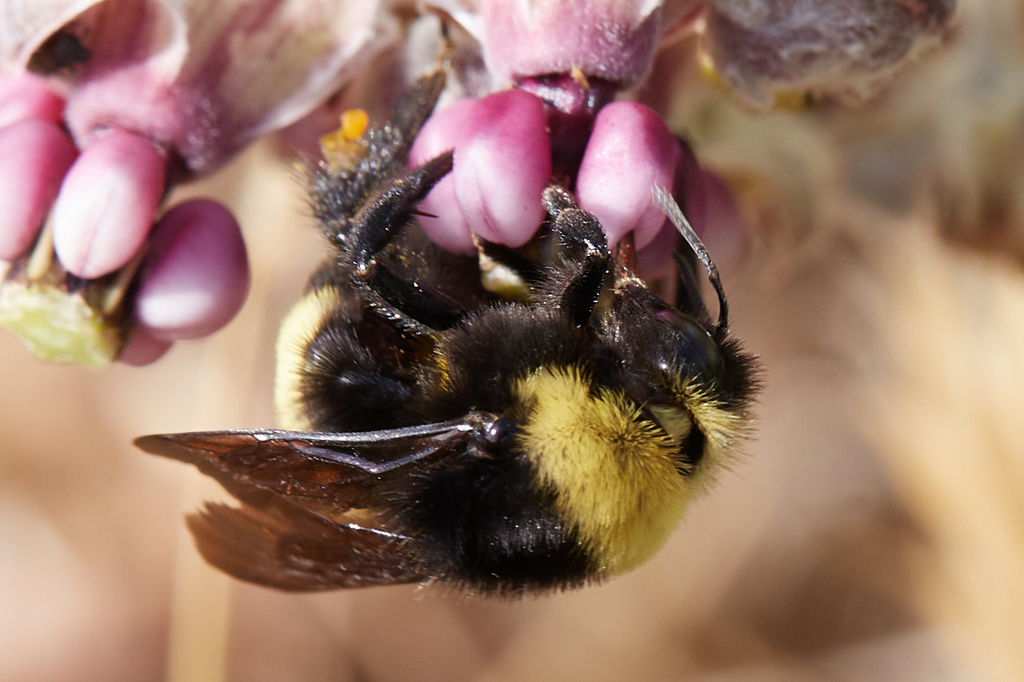
Endangered Crotch’s bumblebee (Bombus crotchii) on California milkweed (Asclepias californica). This species was one of our rare finds during our BioBlitz. Photo by Ken-Ichi Ueda
Participants also identified golden eardrops and fairy fans, or Brewer’s clarkia (Clarkia breweri).
Many Mount Diablo endemics, or species only found in the region, were abundant, including Mount Diablo globe lilies (Calochortus pulchellus) and Mount Diablo sunflowers (Helianthella castanea).
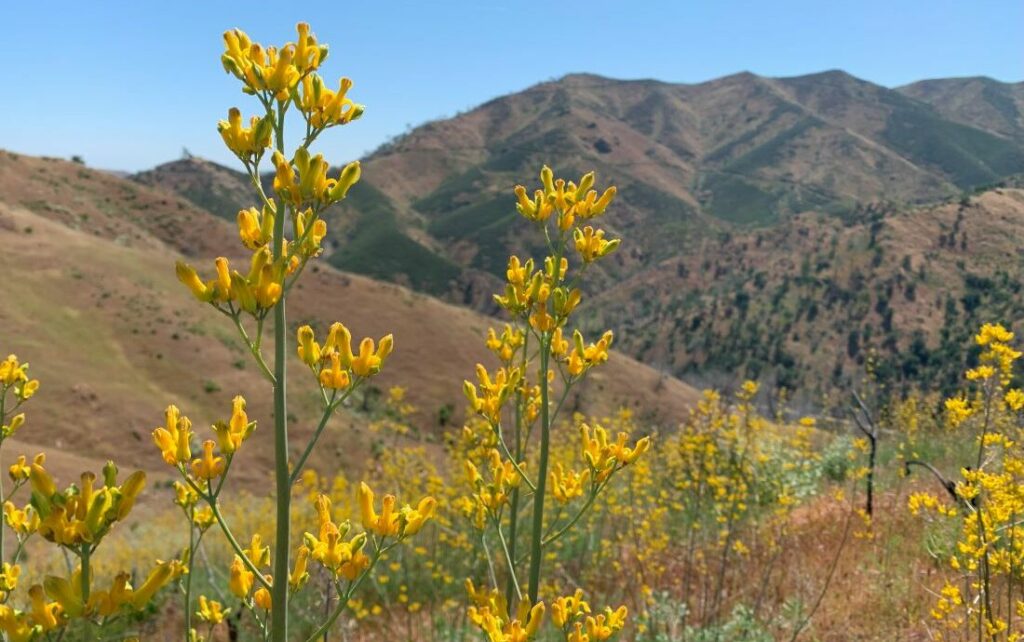
Golden eardrops (Ehrendorferia chrysantha) in Del Puerto Canyon. Photo by Mary Nagle
In 2023, Save Mount Diablo partnered with California State Parks for a 24-hour BioBlitz at the Alameda-Tesla property, also known as Tesla Park, in Livermore to further our understanding of the biodiversity in the area.
During the event, staff members and partners with USGS and Friends of Tesla Park found the first-recorded observation of Brewer’s clarkia in the area, making it the second known population in the East Bay.
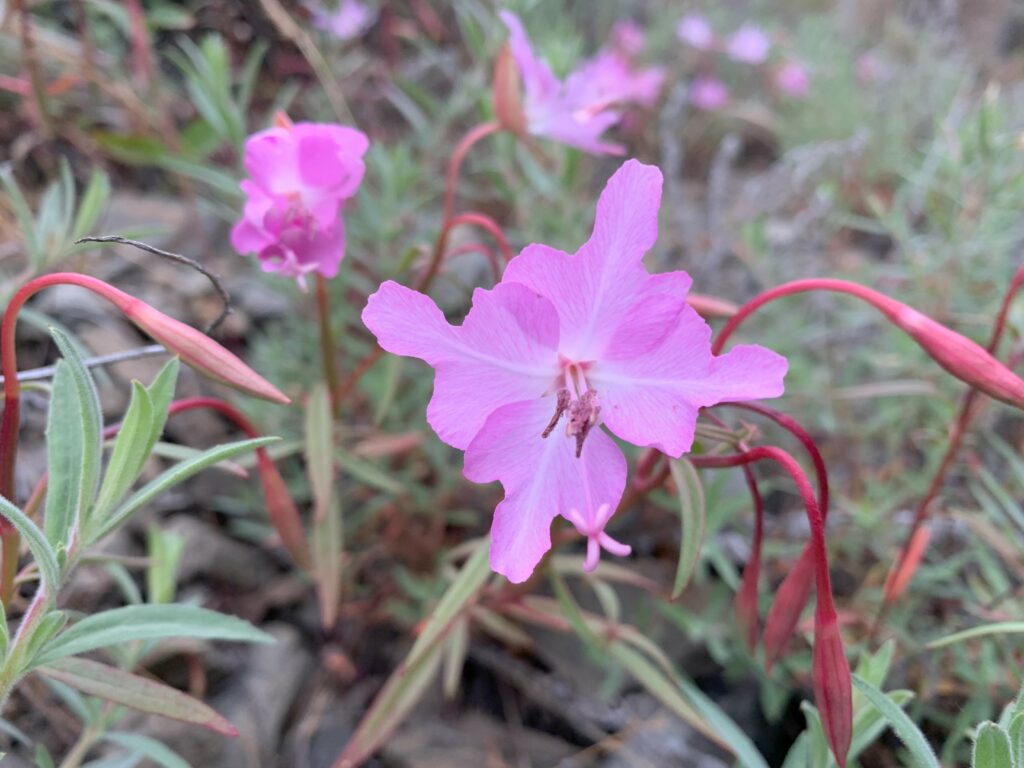
Fairy fans (Clarkia breweri) at the Alameda-Tesla property, also known as Tesla Park. This finding was the first known in this location. Photo by Mary Nagle
Exciting animal findings included spadefoot toad and California red-legged frog larvae, California tiger salamanders, golden eagles, Lewis’s woodpecker, and olive-sided flycatcher. By the end of the event, nearly 600 observations were made of over 300 unique species!
Observers used iNaturalist and eBird to document their sightings. Over the past three years, we were able to contribute to more than 13,000 observations of nearly 1,500 species to the SCU Lightning Complex iNaturalist project.
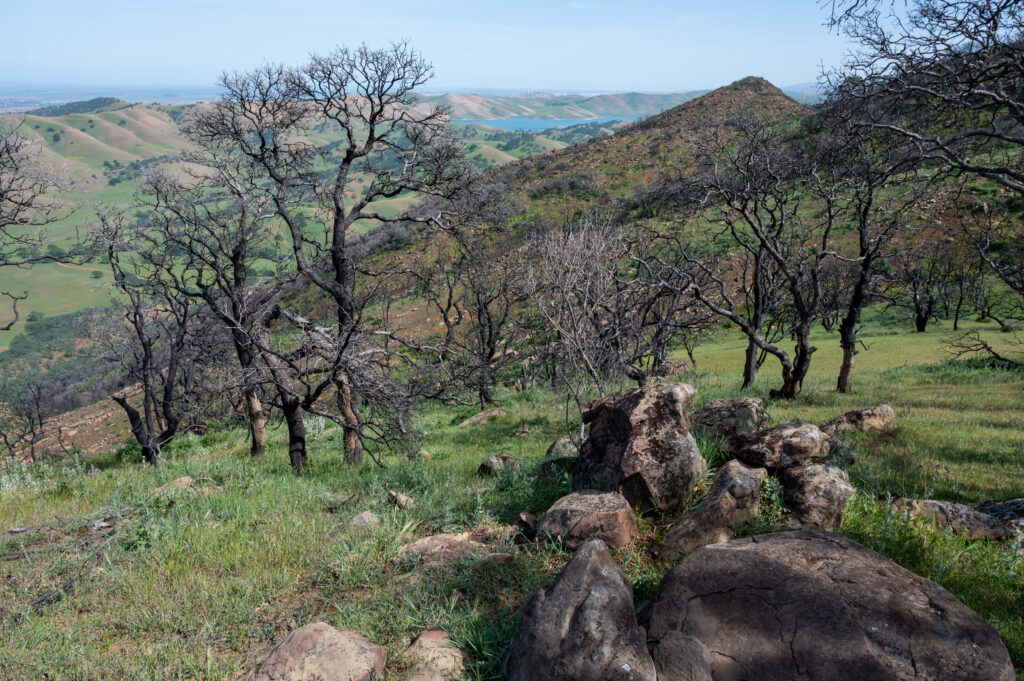
Signs of the recent burn were still visible during the BioBlitz. Photo by Scott Hein
We appreciate the many contributions to this project by naturalists and scientists from partner organizations and our community!
The SCU Lightning Complex wildfires created an opportunity to learn more about the fire ecology of the northern Diablo Range and offered a sneak peak of its geology before the chaparral becomes impenetrable again.

